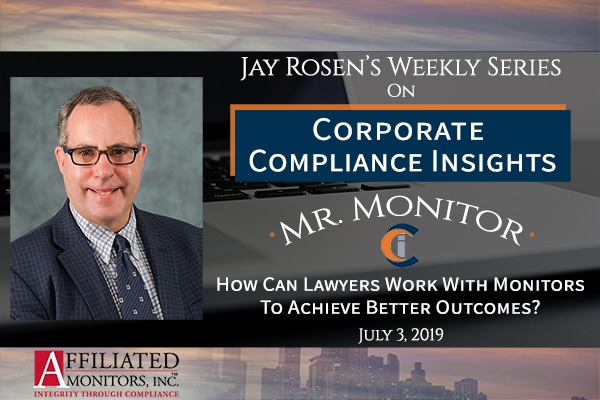
Jay Rosen concludes his exploration on issues in working with monitors by considering how lawyers can engage monitors – most typically when their clients are under investigation for some regulatory issue, such as an FCPA enforcement action.
Don’t Wait Too Long
The biggest mistake outside counsel can make is waiting too long before bringing on an independent monitor.
AMI’s experience is that if you wait until after the conclusion of a matter, you have lost valuable time and potentially cost yourself money in the form of higher fines and penalties. The government expects compliance shortcomings to be remediated during the pendency of an investigation.
A monitorship can even begin before self-reporting to the government. This is because a company should want to find the problem before it voluntarily reports the problem to the government; the company could receive credit for having done so. It also allows the company to package the entire process in a way to say, “not only did we discover the problem, but we are also reporting the problem and, by the way, we have also fixed it.”
The company explains that they used an independent third party and may even want to keep that third party with the company to independently assess how to proceed on a go-forward basis. That’s very persuasive to prosecutors and we’ve certainly seen situations where, in some cases, it’s resulted in a declination or in a significantly diminished fine and penalty.
Active Remediation
If your company is active in the remediation phase, particularly through an independent monitorship, it shows that you are looking at the problem with a holistic approach. This is more than assessing the problem and consists of coming up with set of solutions and then implementing these controls. More importantly, an organization is taking that information and looping it back in, literally in a feedback loop so the companies can continuously improve their compliance program. This also can be persuasive to regulators.


